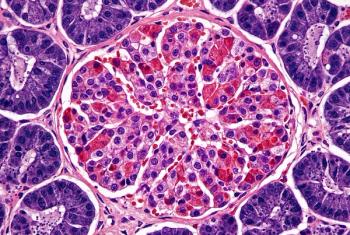
Integrating People-Centered HIV Care With Primary Healthcare | IAS 2025
Integrating people-centered HIV care with primary health care is essential to improving access, equity and health outcomes, but doing so successfully requires coordinated policies, digital transformation, community engagement, and sustained funding, according to experts at IAS 2025.
It is important to integrate people-centered HIV care with primary care because primary care is an easy access point to care. To do this successfully, there must be aligned policies, digitalization, and community engagement, according to a panel discussion called ‘From crises to sustained access: Pathways to integrated people-centered HIV and primary health care (PHC),’ presented today at the International AIDS Society (IAS) 2025 meeting in Kigali, Rwanda.
“Integration happens best when you are combining a number of approaches strategically and deliberately at the same time,” Andy Seale, adviser at the World Health Organization, said during the presentation. “You're looking at models of care and the workforce, but you're also looking at governance and political will, community engagement, and you're doing this in a combined approach at the same time, and hopefully in a deliberate fashion.”
Some countries have already begun this journey and seen success. Salim Hussein, head of primary health care networks in the Ministry of Health, Kenya, shared the changes the Kenyan government has made.
Government reforms in Kenya include the Digital Health Act of 2023 and the Social Health Insurance Act of 2023. Areas they have focused on are moving their healthcare system from a paper-based system to a fully digital one. They have also been focusing on moving from a traditional healthcare system that prioritizes traditional curative health towards a system that encompasses preventive, promotive, curative, rehabilitative and palliative health services.
Healthcare systems in South Africa have been making similar changes, specifically regarding preexposure prophylaxis (PrEP) access.
“Since 2016 we've initiated 1.9 million people who started using oral PrEP,” Hasina Subedar, senior technical advisor of HIV prevention, National Department of Health in South Africa, said during the presentation. “Ninety-seven percent of our primary health care facilities now provide PrEP services across the country; over 4,350 service delivery locations actively provide oral PrEP, and this includes our correctional services facilities and some of our district hospitals.”
Ghana has also made integration strides, with support from The Global Fund.
“Apart from government healthcare [in Ghana], every service in the private sector, including HIV, is a covered, reimbursable service,” Stephen Ayisi Addo, M.D., program manager, National AIDS/STI Control Program, Ghana Health Service, said.
Integration initiatives have been challenged by the recent USAID and PEPFAR defunding, and some programs that were in the middle of changing had to react quickly.
“In Uganda, they had already planned to integrate HIV as part of chronic disease management,” Kimberly Green, Ph.D., leader of the primary health care program at PATH, said. “They thought they had more time, but they had to do it right away.”
Global funding cuts for HIV care and prevention mean that care delivery has been impacted, with approximately an additional 3 million HIV deaths and 11 million new HIV infections estimated by 2030, according to data presented during the panel. Despite this, the panel ended on a positive note.
“'I’m inspired to know at the global level, we are aligned,” Florence Anam, co-executive director at the Global Network of People Living with HIV, said. “The work that is needed starts with building trust among each other to create the systems for all people living with HIV and everyone who needs HIV prevention.”
Newsletter
Get the latest industry news, event updates, and more from Managed healthcare Executive.






















































